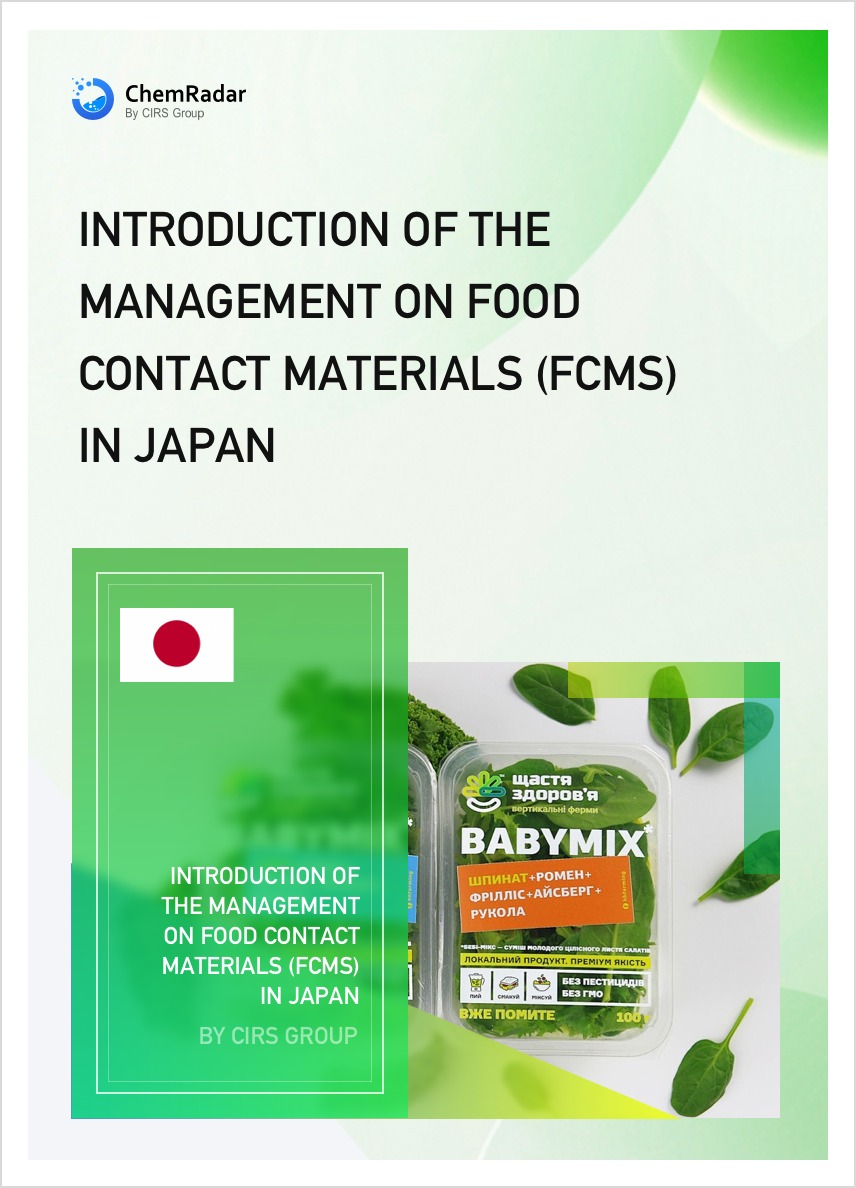4. Positive List System of Food Contact Materials
Under the Food Sanitation Act, the MHLW formulated a Positive List (PL) system, allowing substances that have undergone a safety assessment to be used in food utensils, containers, and packaging. On April 30, 2020, the MHLW announced the first positive list (PL) of synthetic resin materials, which was implemented on June 1, 2020. Substances sold in Japan before the implementation date were subject to existing substances, while those sold after the implementation date were subject to new substances. Existing substances had a 5-year transition period (ending on May 31, 2025), during which they should be included in the positive list. New substances had no transition period and should be included in the positive list before production or importation. The MHLW reviews substances applied for inclusion in the list and updates the positive list.
On March 6, 2023, Japan released the latest draft of the positive list and requested public comments. The positive list of the new draft consists of Table 1 and Table 2.
Table 1: 98% of the monomers in the polymer should be listed in Table 1
Table 2: List of Polymer Additives. Additives used in polymers should be listed in Table 2
Enterprises can check the following flowchart to make sure whether the substances they use are compliant:

If a substance is subject to existing substances, meaning the substances have been used in Japan before June 1, 2020, but are not listed in the positive list, then the enterprise shall submit an application during the public consultation period to include the substances in the list. The process is as follows:

| Existing substance application materials |
| 1. Application form |
| 2. Documentation proving the substance was used before June 1, 2020 |
If a substance is subject to new substance or substance new uses, meaning the substance used in Japan after June 1, 2020, or the substance was used before June 1, 2020, but a new use is added, an application shall be submitted to relevant authorities before production/importation. After passing the safety assessment review, a notice will be issued to include the substance in the positive list. The process is as follows:

| Application materials required by new substance/ substance for new uses |
| I. Qualitative and quantitative information of substances |
a. Substance information |
| b. Substance application and conditions |
| c. Range of substance application and quantity restrictions |
| d. Domestic and international application |
| e. International assessment |
| f. Other information |
| II. Migration information |
a. Migration experiment data |
| b. Cumulative dietary concentration |
III. Safety Toxicology Information
|
a. Genotoxicity |
b. Subchronic toxicity
|
c. Reproductive toxicity
|
d. Developmental toxicity
|
e. Chronic toxicity
|
f. Carcinogenicity
|
g. ADME
|
h. Other (Neurotoxicity, Immunotoxicity, Endocrine activity, Bioaccumulation)
|







